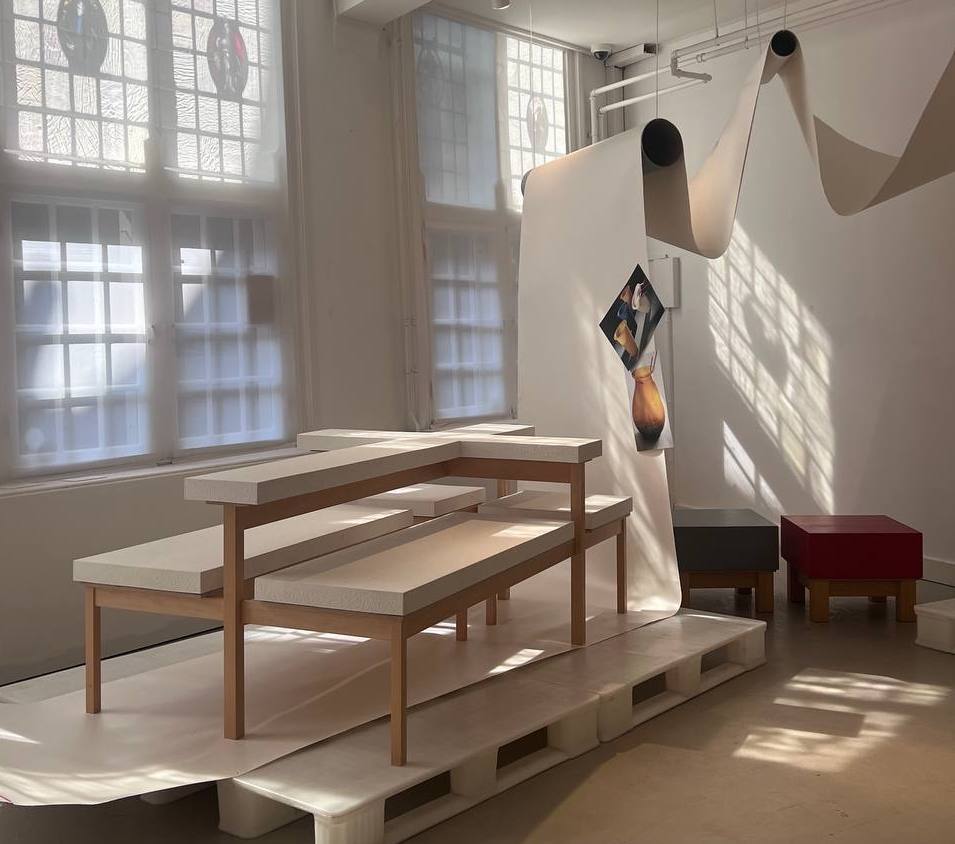

Exhibition: Droog Archives
Droog Archives is a semi-permanent exhibition in which parts of the extensive Droog archive are shown through texts. photographs, films and artefacts. A timeline highlights projects that Droog has initiated over the past 30 years, accompanied by Droog classics. In line with the simultaneous BODY HEAT exhibition, this edition of the Archives focuses on the senses and human interaction: from soft touch to body heat.
Droog’s International debut in Milan was an adventure. Two individuals who hardly knew each other, Renny Ramakers and Gijs Bakker, decided to join forces in February 1993 and make a statement during the Salone del Mobile in Milan with a selection of works by young Dutch designers. They had noticed a fresh trend in Dutch design, in the use of every day, reused materials and objects, combined with a down-to-earth mentality. The designs were simple yet humoristic — literally ‘dry’, ‘Droog’ in Dutch.
Ramakers and Bakker had no plan and no expectations whatsoever. All they knew was that they were presenting a strong narrative and fresh designs. But they were not sure how their humble show, with work by totally unknown designers — the term ‘Dutch Design’ was non-existent at the time — would be received in ‘High Style Design’ capital in Milan. To their surprise, Droog became the talk of the town. Now that the show had turned out to be an instant success, Ramakers and Bakker felt they should continue, and gradually Droog became an international movement, which put Dutch Design firmly on the map.
Droog became a label for a collection of products, carefully curated by Bakkaer and Ramakers. The selection process was primarily based on look & feel and content. They never took questions like “Will it sell?” or “Can it be produced industrially?” into their considerations. While a considerable number of products from the Droog collection reached shops, as many remained only prototypes and concepts. For Bakker and Ramakers, that made no difference at all. Both found their way to international museums, especially MoMA New York and Centraal Museum in Utrecht.
The 1993 Droog presentation showed individual objects, each with its own strong narrative. In due course, the presentations in Milan would become more thematic in nature. Droog addressed all kinds of topics, from human interaction, high-tech materials and downloadable design to overproduction and climate change. Over the years, Droog collaborated with more than 200 designers inside and outside the Netherlands and was invited for exhibitions and projects all over the world, from India to Senegal, and from China to New Zealand.
For a long time, Droog presented itself everywhere in the world but was rarely visible in its hometown Amsterdam. This changed in 2024 when Droog moved into a historical building on the Staalstraat, dating from 1641. It used to be the centre of the flourishing textile industry, housing the officials of the Amsterdam Drapers’ Guild. Rembrandt painted his masterpiece De Staalmeesters especially for their boarding room. Droog commissioned contemporary artist Berend Strik to reinterpret Rembrandt’s famous painting, and his version has been installed on the original spot. The new location was intended as a hub from which the Droog mentality could be disseminated through exhibitions, publications, social events, and educational activities.
